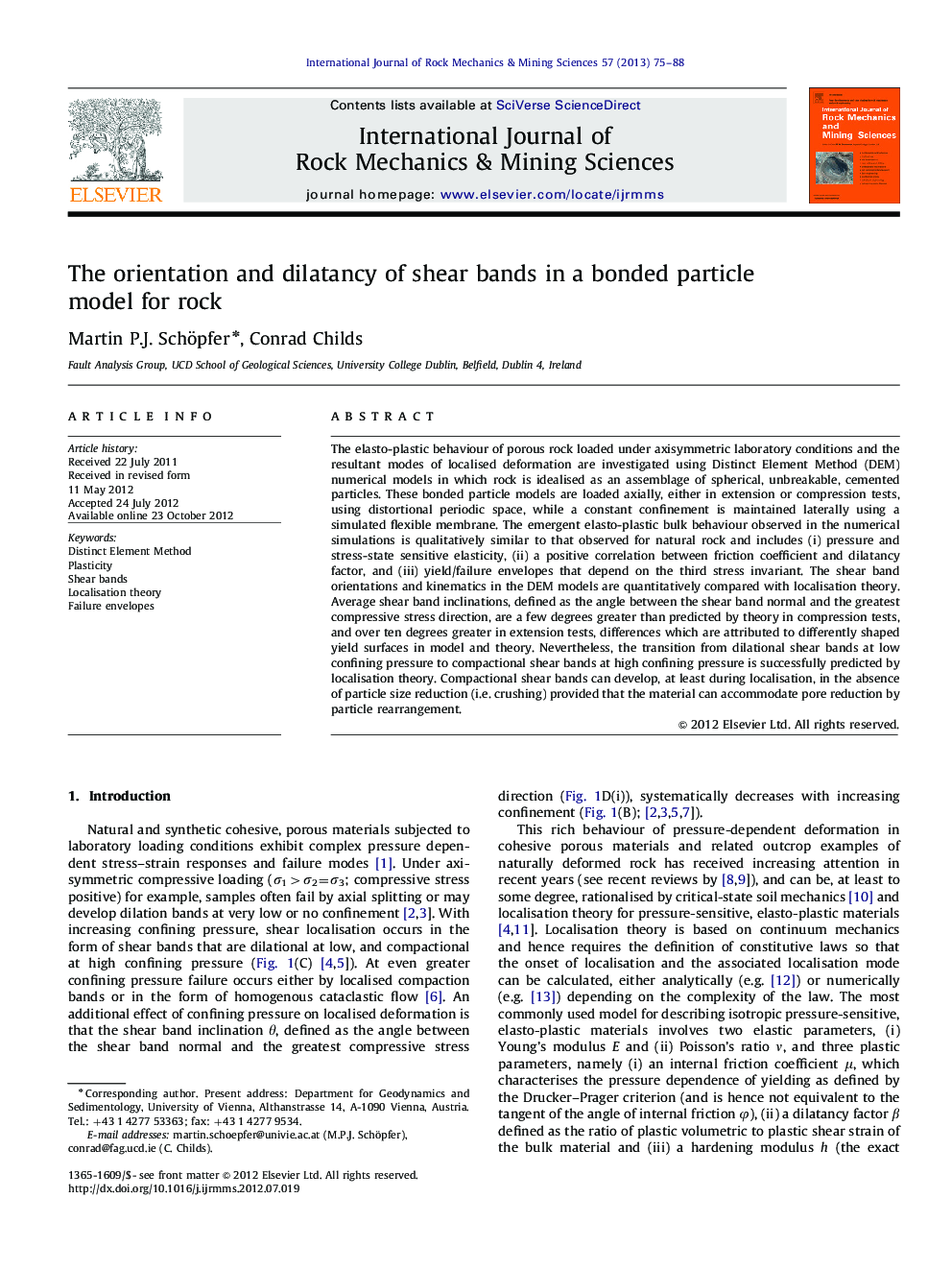| کد مقاله | کد نشریه | سال انتشار | مقاله انگلیسی | نسخه تمام متن |
|---|---|---|---|---|
| 809476 | 1468712 | 2013 | 14 صفحه PDF | دانلود رایگان |

The elasto-plastic behaviour of porous rock loaded under axisymmetric laboratory conditions and the resultant modes of localised deformation are investigated using Distinct Element Method (DEM) numerical models in which rock is idealised as an assemblage of spherical, unbreakable, cemented particles. These bonded particle models are loaded axially, either in extension or compression tests, using distortional periodic space, while a constant confinement is maintained laterally using a simulated flexible membrane. The emergent elasto-plastic bulk behaviour observed in the numerical simulations is qualitatively similar to that observed for natural rock and includes (i) pressure and stress-state sensitive elasticity, (ii) a positive correlation between friction coefficient and dilatancy factor, and (iii) yield/failure envelopes that depend on the third stress invariant. The shear band orientations and kinematics in the DEM models are quantitatively compared with localisation theory. Average shear band inclinations, defined as the angle between the shear band normal and the greatest compressive stress direction, are a few degrees greater than predicted by theory in compression tests, and over ten degrees greater in extension tests, differences which are attributed to differently shaped yield surfaces in model and theory. Nevertheless, the transition from dilational shear bands at low confining pressure to compactional shear bands at high confining pressure is successfully predicted by localisation theory. Compactional shear bands can develop, at least during localisation, in the absence of particle size reduction (i.e. crushing) provided that the material can accommodate pore reduction by particle rearrangement.
► The elasto-plastic behaviour of bonded particle models is investigated.
► A positive correlation between friction coefficient and dilatancy factor emerges.
► The modelled shear band orientations are compared with localisation theory.
► Compactional shear bands develop even in the absence of particle size reduction.
Journal: International Journal of Rock Mechanics and Mining Sciences - Volume 57, January 2013, Pages 75–88